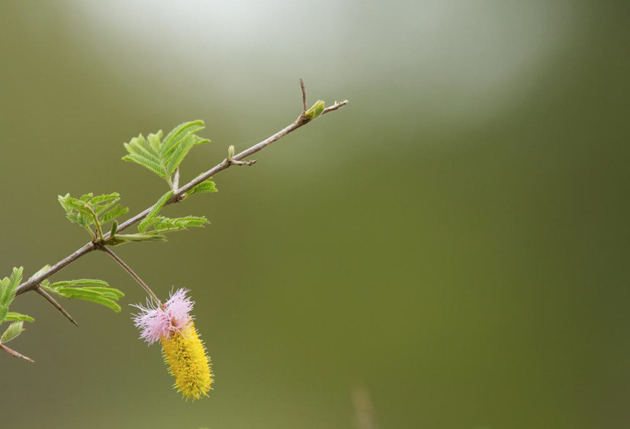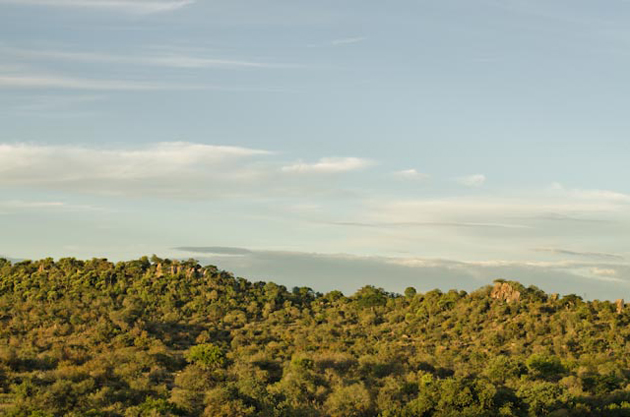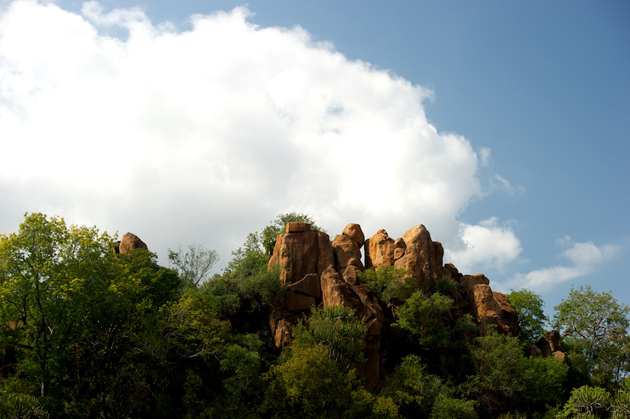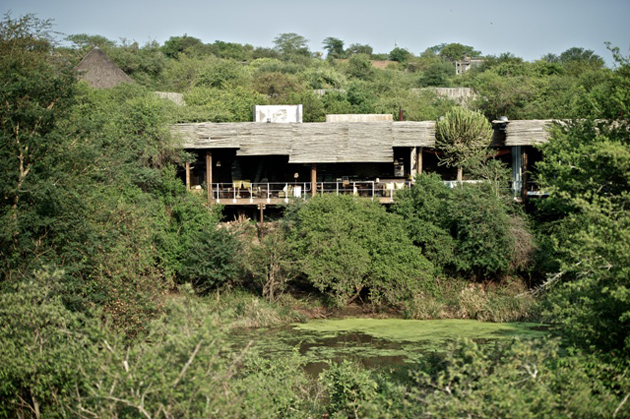Blog
October 28, 2014
Fascinating Flora: The Sickle Bush
The sickle bush (dichrostachys cinerea) is one of the many splashes of colour that our field guides associate with this time of year, as it generally flowers from October to February. It goes by many names; bell mimosa, Chinese lantern tree, Kalahari Christmas tree and, perhaps most curiously, ‘acacia puncture tyre’. While not in the acacia family at all, it happens to have extremely hard spines capable of puncturing a tyre. The spines are modified stems rather than modified leaves (which you would find in an acacia) and this makes them even harder to break.
The name “sickle bush” stems from the seedpods which are packed close together and each single pod curves in the shape of a sickle. It is a tree that has a preference for brackish soils, and is a highly aggressive encroachment species. In Cuba, where it is known as ‘Marabou weed’, it has become a serious invasive species problem, occupying close to five million acres of agricultural land. It can, if not managed correctly, grow to the point of impenetrable thickets.
The sickle bush is one of the most widely used medicinal trees throughout Africa. Abdominal pains, eye ailments and snake bites can be treated using parts of a sickle bush. In fact, some of our guides have first-hand knowledge of this powerful natural anaesthetic! One of them reported chewing the leaves to help kill the pain of a toothache, for which it worked brilliantly. The only problem? Within minutes your tongue turns numb as well and then you can’t talk – not ideal for narrating a game drive!
Follow our monthly Wildlife Reports to learn more about the beautiful flora and fauna to be found at our 12 lodges and camps.
The post Fascinating Flora: The Sickle Bush appeared first on Singita.









































Add comment
The sickle bush (dichrostachys cinerea)
Singita Kruger National Park, South Africa
The sickle bush (dichrostachys cinerea) is one of the many splashes of colour that our field guides associate with this time of year, as it generally flowers from October to February. It goes by many names; bell mimosa, Chinese lantern tree, Kalahari Christmas tree and, perhaps most curiously, ‘acacia puncture tyre’. While not in the acacia family at all, it happens to have extremely hard spines capable of puncturing a tyre. The spines are modified stems rather than modified leaves (which you would find in an acacia) and this makes them even harder to break.
Singita Kruger National Park, South Africa
The name “sickle bush” stems from the seedpods which are packed close together and each single pod curves in the shape of a sickle. It is a tree that has a preference for brackish soils, and is a highly aggressive encroachment species. In Cuba, where it is known as ‘Marabou weed’, it has become a serious invasive species problem, occupying close to five million acres of agricultural land. It can, if not managed correctly, grow to the point of impenetrable thickets.
Singita Sweni Lodge, Singita Kruger National Park, South Africa
The sickle bush is one of the most widely used medicinal trees throughout Africa. Abdominal pains, eye ailments and snake bites can be treated using parts of a sickle bush. In fact, some of our guides have first-hand knowledge of this powerful natural anaesthetic! One of them reported chewing the leaves to help kill the pain of a toothache, for which it worked brilliantly. The only problem? Within minutes your tongue turns numb as well and then you can’t talk – not ideal for narrating a game drive!
Follow our monthly Wildlife Reports to learn more about the beautiful flora and fauna to be found at our 12 lodges and camps.
The post Fascinating Flora: The Sickle Bush appeared first on Singita.